Imagine this: Jane, a passionate travel blogger, spends countless hours crafting captivating stories about her adventures. She captures breathtaking photos to complement her tales, but despite her best efforts, her website struggles to attract the audience it deserves. What went wrong? The culprit: poorly optimized images.
In today’s digital landscape, optimizing images isn’t just about making your website visually appealing—it’s a key strategy for improving your SEO performance. Let’s explore the untold tips and tricks of image optimization to help your site rank higher on search engines and reach a broader audience.
The Importance of Image Optimization for SEO
When a search engine like Google crawls your site, it doesn’t “see” images the way humans do. Instead, it relies on metadata, file names, and contextual clues to understand what an image represents. Optimizing these elements not only improves your website’s speed and user experience but also boosts its discoverability in search results.
Here are some key reasons image optimization is crucial:
- Faster Loading Speeds: Compressed and optimized images load faster, reducing bounce rates.
- Enhanced Accessibility: Alt text and captions make your site more inclusive for users with visual impairments.
- Increased Traffic: Properly optimized images can appear in Google’s image search, driving more traffic to your site.
Untold Tips for Image Optimization
While basic tips like compressing images and using descriptive file names are widely known, let’s dive into some advanced strategies that often go overlooked.
1. Craft Alt Text Like a Storyteller
Imagine you’re describing an image to someone over the phone. Would you say, “Picture1.jpg,” or would you describe the scene vividly? For example, instead of using “sunset,” write: “A serene sunset over the Pacific Ocean, with vibrant hues of orange and pink reflecting on calm waves.” This approach not only helps visually impaired users but also gives search engines richer context.
2. Leverage NLP to Enhance Metadata
Natural Language Processing (NLP) can elevate your metadata. Tools like OpenAI’s GPT can generate engaging and keyword-rich descriptions. For instance, if you’re uploading an image of a hiking trail, you could use NLP tools to craft a meta description like: “Explore the lush greenery of the Appalachian Trail, a haven for nature enthusiasts and adventurers alike.”
3. Use WebP Format for Modern Browsers
WebP is a cutting-edge image format that offers superior compression without compromising quality. Jane, our travel blogger, switched her site’s images from JPEG to WebP and noticed a 30% improvement in page speed—resulting in higher engagement rates.
4. Create an Image Sitemap
An image sitemap is like a treasure map for search engines. It provides detailed information about the images on your site, making it easier for crawlers to index them. Use tools like Screaming Frog or Google Search Console to generate an image sitemap and submit it to search engines.
5. Harness the Power of Lazy Loading
Lazy loading ensures that images only load when they’re about to enter the user’s viewport. This technique drastically reduces initial page load times. Imagine visiting Jane’s blog and waiting ages for a gallery of 50 images to load. With lazy loading, users see images as they scroll, ensuring a seamless experience.
6. Optimize for Voice Search
Voice search is growing rapidly, and optimizing for it involves anticipating conversational queries. For example, if Jane’s image caption reads, “A cozy cabin in the Swiss Alps,” she could adjust the alt text to align with common voice queries: “Where can I find cozy cabins in the Swiss Alps?”
Imaginary Case Study: From Obscurity to Visibility
Let’s revisit Jane. Initially, her website had massive, uncompressed images named “IMG1234.jpg.” Her bounce rates were high, and her images barely ranked in search results.
After learning about image optimization, she:
- Renamed her files to descriptive terms like “sunset_over_pacific.jpg.”
- Added engaging alt text using storytelling techniques.
- Compressed images using WebP format.
- Enabled lazy loading.
- Submitted an image sitemap to Google.
Within three months, Jane’s traffic tripled, and her photos started appearing on the first page of Google Image Search.
Final Thoughts
Image optimization is more than a technical chore; it’s an art and a science. By combining storytelling with technical finesse, you can unlock your website’s true potential. So, whether you’re a travel blogger like Jane or a business owner showcasing products, remember: every pixel counts in the journey to better SEO.
Start optimizing today, and watch your website soar to new heights—just like Jane’s breathtaking adventures.

